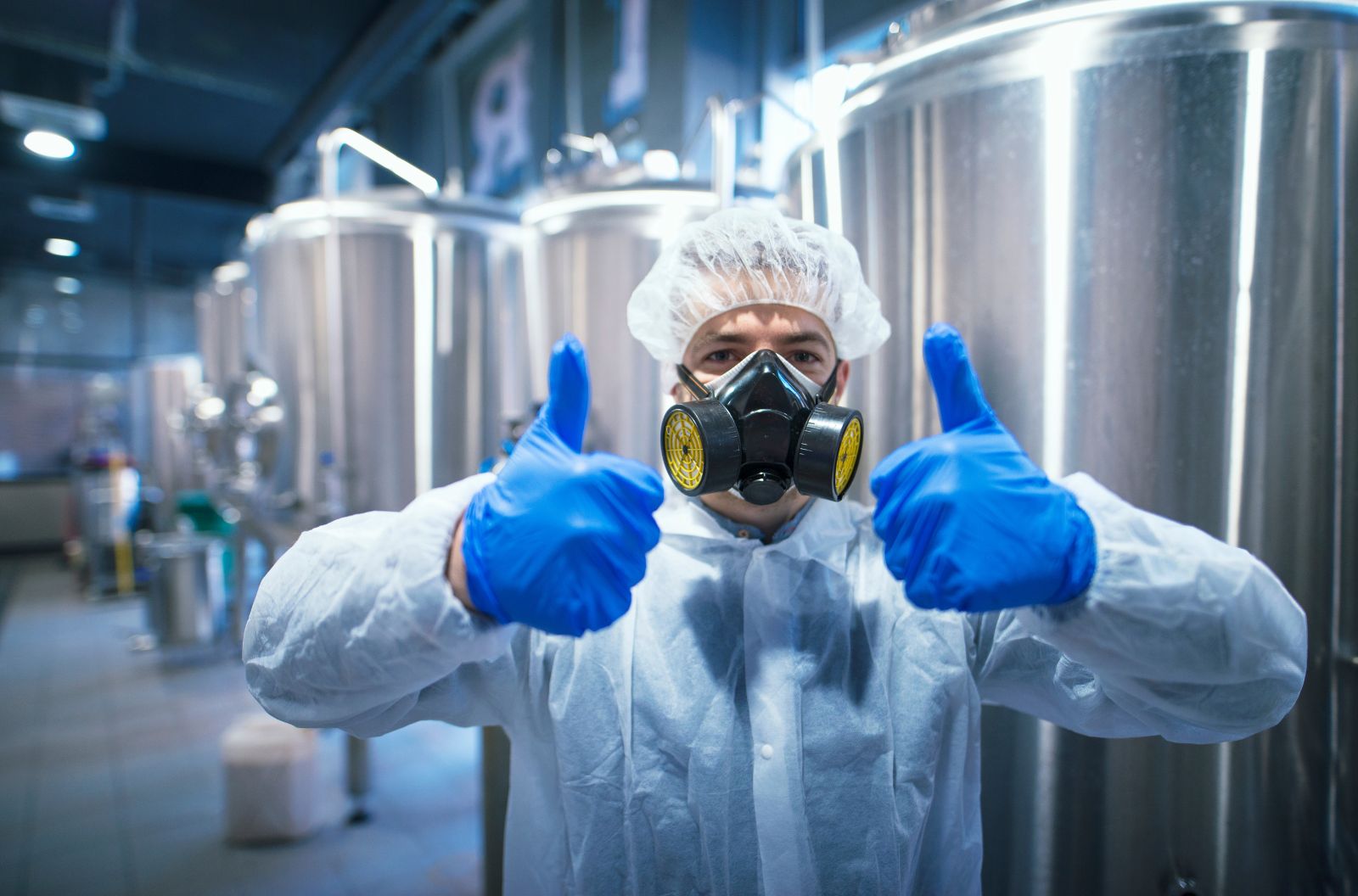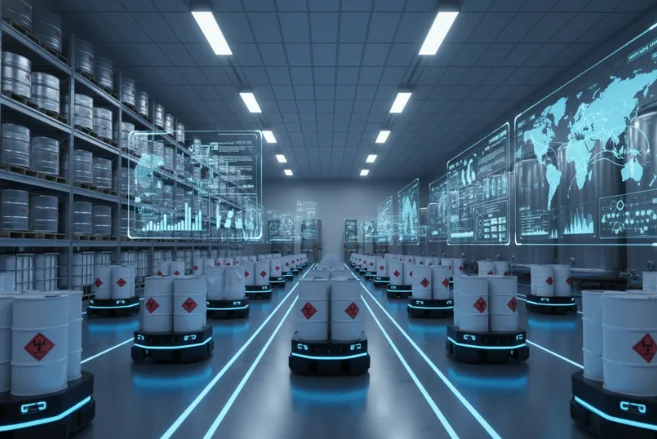Ensuring chemical safety in manufacturing settings is crucial for protecting workers, maintaining regulatory compliance, and preventing environmental damage. Chemical mishandling can lead to severe health issues, accidents, and legal penalties, highlighting the importance of strict safety protocols.
This article covers the key aspects of chemical safety, including the importance of safety measures, common hazards associated with chemicals, and the health and environmental impacts of chemical exposure. Understanding these elements is essential for creating a safe and compliant workplace.
Protecting workers from chemical hazards is essential. Exposure to harmful chemicals can lead to serious health issues, including respiratory problems, skin irritations, and chronic diseases. Implementing comprehensive safety measures, such as proper ventilation, use of personal protective equipment (PPE), and regular health monitoring, is crucial. These measures ensure that employees are safe, reducing health risks and fostering a productive work environment.
Preventing accidents is a key aspect of chemical safety. Proper handling, storage, and disposal of chemicals are fundamental practices to avoid incidents like spills, fires, and explosions. Regular safety audits, risk assessments, and emergency response drills help prepare employees for potential hazards. Implementing these protocols minimizes the likelihood of accidents, ensuring a safer workplace.
Maintaining regulatory compliance with standards like OSHA and EPA is critical to avoid legal issues and penalties. Compliance ensures that the workplace is safe for employees and the environment. A strong safety record enhances the company’s reputation, demonstrating a commitment to safety and operational excellence. This builds trust with clients, partners, and the community, contributing to long-term business success.
Flammability: Chemicals that ignite easily pose a fire risk. Handling flammable substances requires strict adherence to safety protocols, such as using flame-resistant storage and maintaining proper ventilation to prevent the accumulation of flammable vapors.
Reactivity: Reactive chemicals can undergo dangerous reactions when exposed to other substances or environmental conditions. Proper segregation and storage are vital to prevent accidental reactions, which can lead to explosions, fires, or toxic gas releases.
Explosiveness: Explosive materials can detonate under certain conditions, causing severe damage and injury. Storing these chemicals in controlled environments and using appropriate containers helps mitigate the risk of accidental explosions.
Toxicity: Toxic chemicals can cause poisoning, respiratory issues, and other health problems upon exposure. Using personal protective equipment (PPE), such as gloves and masks, and ensuring proper ventilation can reduce the risk of exposure to toxic substances.
Corrosiveness: Corrosive substances can cause severe burns and tissue damage on contact with skin, eyes, or respiratory systems. Safe handling practices include using protective clothing, goggles, and face shields, along with proper storage in corrosion-resistant containers.
Carcinogenicity: Some chemicals are known carcinogens, meaning they can cause cancer over long-term exposure. Limiting exposure, using appropriate PPE, and conducting regular health monitoring are essential to protect workers from these long-term health risks.
Pollution: Chemicals can pollute air, water, and soil if not handled correctly. Spills and improper disposal can lead to environmental contamination, harming wildlife and ecosystems. Adhering to environmental regulations and employing best practices for chemical storage and disposal help minimize pollution risks.
Environmental Damage: Chemical accidents can cause extensive ecological damage, affecting biodiversity and natural resources. Implementing spill containment measures and emergency response plans can mitigate the impact of chemical accidents on the environment.
Acute Exposure Risks: Acute exposure to chemicals can lead to immediate health issues such as
Burns: Contact with corrosive substances can cause severe skin and eye burns.
Poisoning: Ingesting or inhaling toxic chemicals can lead to poisoning.
Respiratory Issues: Inhalation of harmful fumes can cause acute respiratory distress. Implementing proper safety protocols and first aid measures is essential to mitigate these risks.
Chronic Exposure Risks: Long-term exposure to hazardous chemicals can result in serious health problems, including
Cancer: Prolonged exposure to carcinogens increases the risk of cancer.
Organ Damage: Continuous exposure to toxic chemicals can lead to damage to vital organs like the liver and kidneys.
Reproductive Harm: Certain chemicals can affect reproductive health, causing infertility or developmental issues in offspring. Strict adherence to safety measures and regular health monitoring can help reduce these long-term risks.
Air Pollution: Chemical vapors can pollute the air, affecting both human health and wildlife.
Water Contamination: Spills and improper disposal of chemicals can contaminate water sources, harming aquatic life and affecting drinking water.
Soil Pollution: Chemicals can seep into the soil, affecting plant life and entering the food chain, which can impact agriculture and human health. Implementing proper disposal methods, regular environmental monitoring, and effective emergency response plans are crucial to minimize environmental damage and protect ecosystems.
Bhopal Gas Tragedy (1984) The Bhopal disaster, one of the worst industrial accidents, occurred at a pesticide plant in India. The accidental release of methyl isocyanate gas exposed over half a million people to toxic fumes, resulting in thousands of immediate deaths and long-term health issues such as blindness, respiratory problems, and birth defects. Investigations revealed severe lapses in safety protocols, inadequate maintenance, and poor emergency preparedness.
Texas City Refinery Explosion (2005) The explosion at BP’s Texas City refinery resulted from unsafe practices and failed equipment. A faulty valve and the lack of a proper safety culture led to a massive explosion, killing 15 workers and injuring over 170 others. The incident exposed critical issues in safety management, including ignored warning signs and insufficient worker training.
Importance of Maintenance: Regular maintenance and inspection of equipment are crucial to prevent leaks and failures. Effective maintenance schedules and procedures can avert such disasters.
Emergency Preparedness: Developing comprehensive emergency response plans and conducting regular drills can minimize casualties and damage. Communities around industrial sites should be educated about emergency procedures.
Safety Protocols: Strict adherence to safety protocols and regular risk assessments are essential. Safety systems should be robust and regularly updated to address any identified risks.
Training: Continuous safety training ensures that all employees understand proper procedures and emergency responses. Training programs should be mandatory and regularly refreshed to maintain high safety standards.
These case studies illustrate the dire consequences of neglecting chemical safety and the importance of rigorous safety measures, maintenance, and training. By learning from these incidents, industries can implement better practices to prevent similar occurrences and protect both their workers and the environment.
Ensuring chemical safety in manufacturing is crucial for protecting workers, preventing accidents, and maintaining compliance with regulations. Understanding common hazards and their health and environmental impacts is essential. Real-life case studies like the Bhopal Gas Tragedy and Texas City Refinery Explosion highlight the severe consequences of neglecting safety protocols and the importance of regular maintenance, rigorous safety training, and effective emergency preparedness. Continuous improvement in safety practices is vital to creating a safe and compliant workplace, fostering trust and operational excellence.



